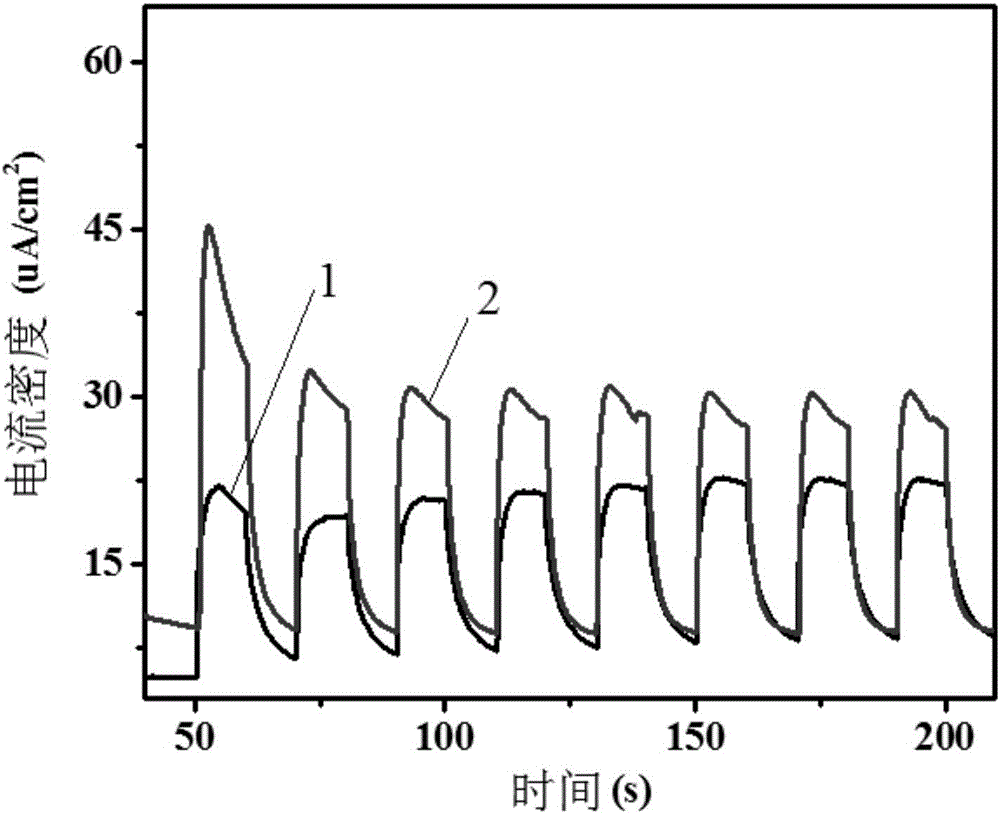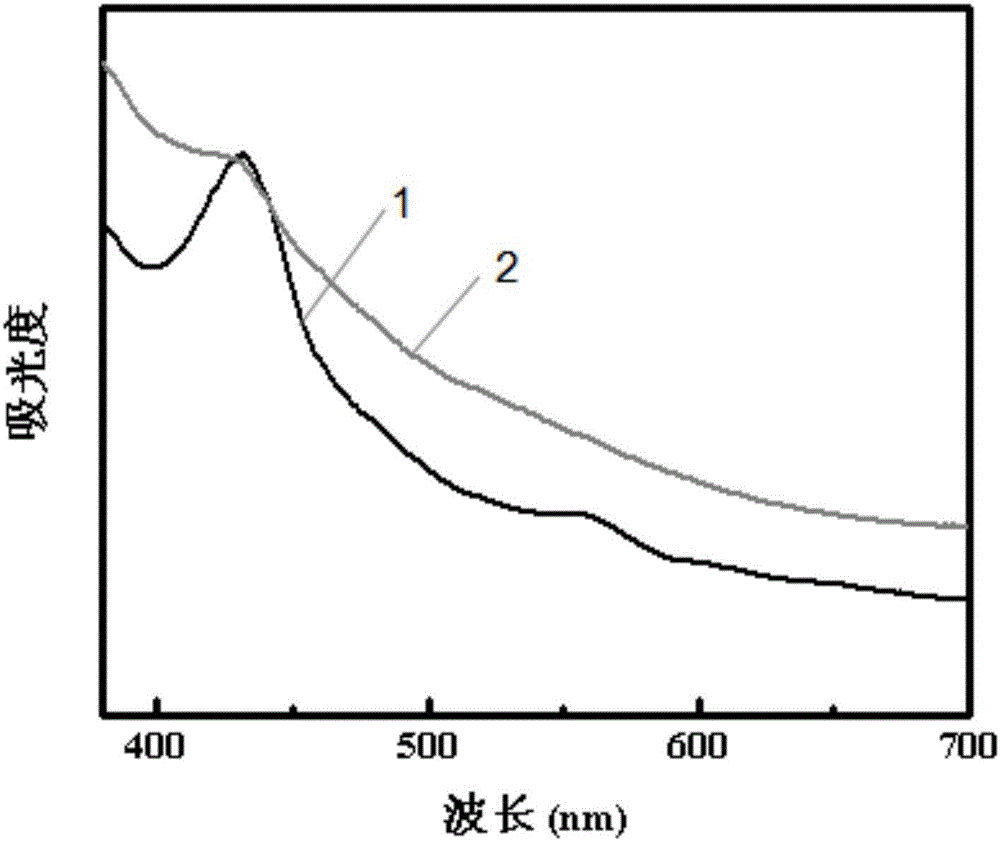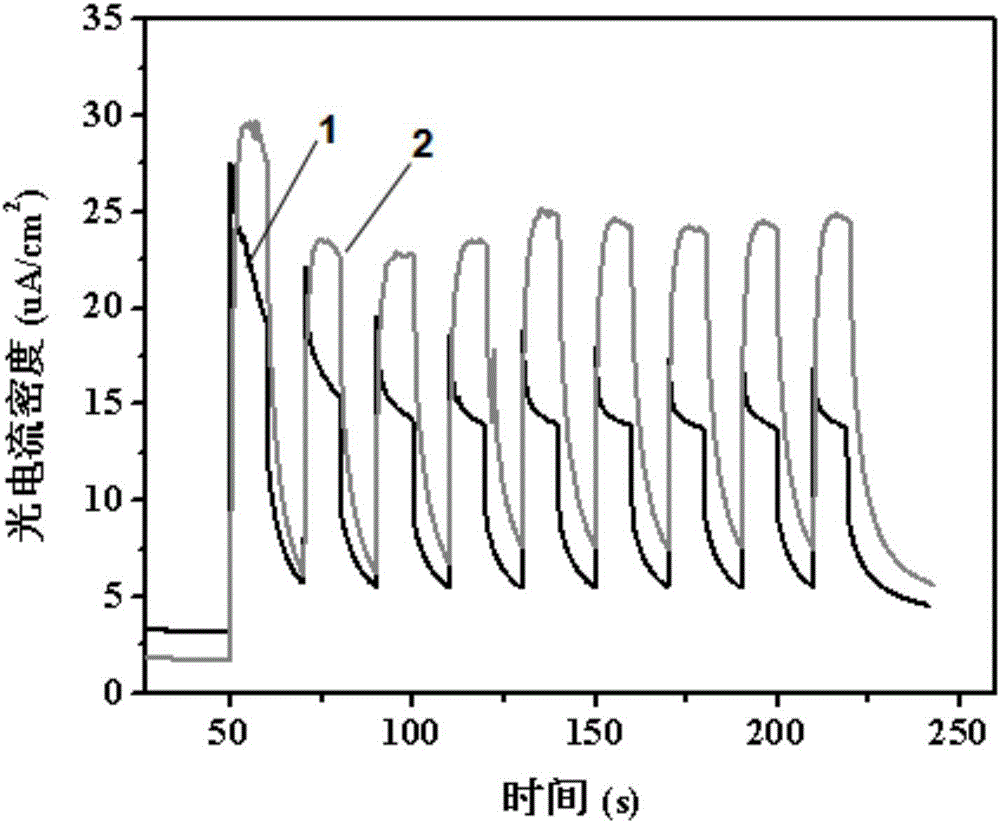Preparation method of NiO photocathode based on self-assembly of zinc porphyrin and cobalt dimethylglyoximate
A technology of dimethylglyoxime and photocathode, which is applied in the direction of electrodes, electrolysis components, electrolysis process, etc., can solve the problems of slow hydrogen production, complicated methods, and low efficiency of photocathode for water decomposition
- Summary
- Abstract
- Description
- Claims
- Application Information
AI Technical Summary
Problems solved by technology
Method used
Image
Examples
specific Embodiment approach 1
[0068] Embodiment 1: This embodiment is a method for preparing a NiO photocathode based on the self-assembly of porphyrin zinc and dimethylglyoxime cobalt, which is characterized in that the method is specifically completed according to the following steps:
[0069] 1. Preparation of NiO dense layer precursor: NiCl 2 ·6H 2 O, P123, deionized water and absolute ethanol were mixed, stirred evenly and then placed in a centrifuge to remove the precipitate, and the obtained supernatant was the NiO dense layer precursor;
[0070] NiCl as described in step 1 2 ·6H 2 The mass ratio of O to P123 is 1:(0.5~0.8);
[0071] NiCl as described in step 1 2 ·6H 2 The mass ratio of O to deionized water is 1:(1.3~1.66);
[0072] NiCl as described in step 1 2 ·6H 2 The mass ratio of O and absolute ethanol is 1:(3~3.3);
[0073] The centrifugal speed of the centrifuge described in step 1 is 7000r / min~9000r / min, and the centrifugation time is 3min~7min;
[0074] 2. Preparation of NiO dens...
specific Embodiment approach 2
[0126] Specific embodiment two: the difference between this embodiment and specific embodiment one is: the NiCl described in step one 2 ·6H 2 The mass ratio of O and P123 is 1:(0.5~0.65); NiCl described in step one 2 ·6H 2 The mass ratio of O to deionized water is 1:(1.3~1.45); the NiCl described in step one 2 ·6H 2 The mass ratio of O to absolute ethanol is 1:(3-3.15). Other steps are the same as in the first embodiment.
specific Embodiment approach 3
[0127] Specific embodiment three: the difference between this embodiment and specific embodiment one or two is: in step two (1), the NiO dense layer precursor solution obtained in step one is spin-coated to the conductive surface of FTO conductive glass by spin coating and then placed in an oven at a temperature of 65°C to 75°C to dry for 3min to 5min; repeat step 2①1 to 2 times in step 2②, and then sinter at a temperature of 300°C to 350°C for 30min to 40min to obtain FTO conductive glass with NiO dense layer on the surface. Other steps are the same as those in Embodiment 1 or 2.
PUM
| Property | Measurement | Unit |
|---|---|---|
| thickness | aaaaa | aaaaa |
| particle diameter | aaaaa | aaaaa |
| thickness | aaaaa | aaaaa |
Abstract
Description
Claims
Application Information
 Login to View More
Login to View More - R&D
- Intellectual Property
- Life Sciences
- Materials
- Tech Scout
- Unparalleled Data Quality
- Higher Quality Content
- 60% Fewer Hallucinations
Browse by: Latest US Patents, China's latest patents, Technical Efficacy Thesaurus, Application Domain, Technology Topic, Popular Technical Reports.
© 2025 PatSnap. All rights reserved.Legal|Privacy policy|Modern Slavery Act Transparency Statement|Sitemap|About US| Contact US: help@patsnap.com



